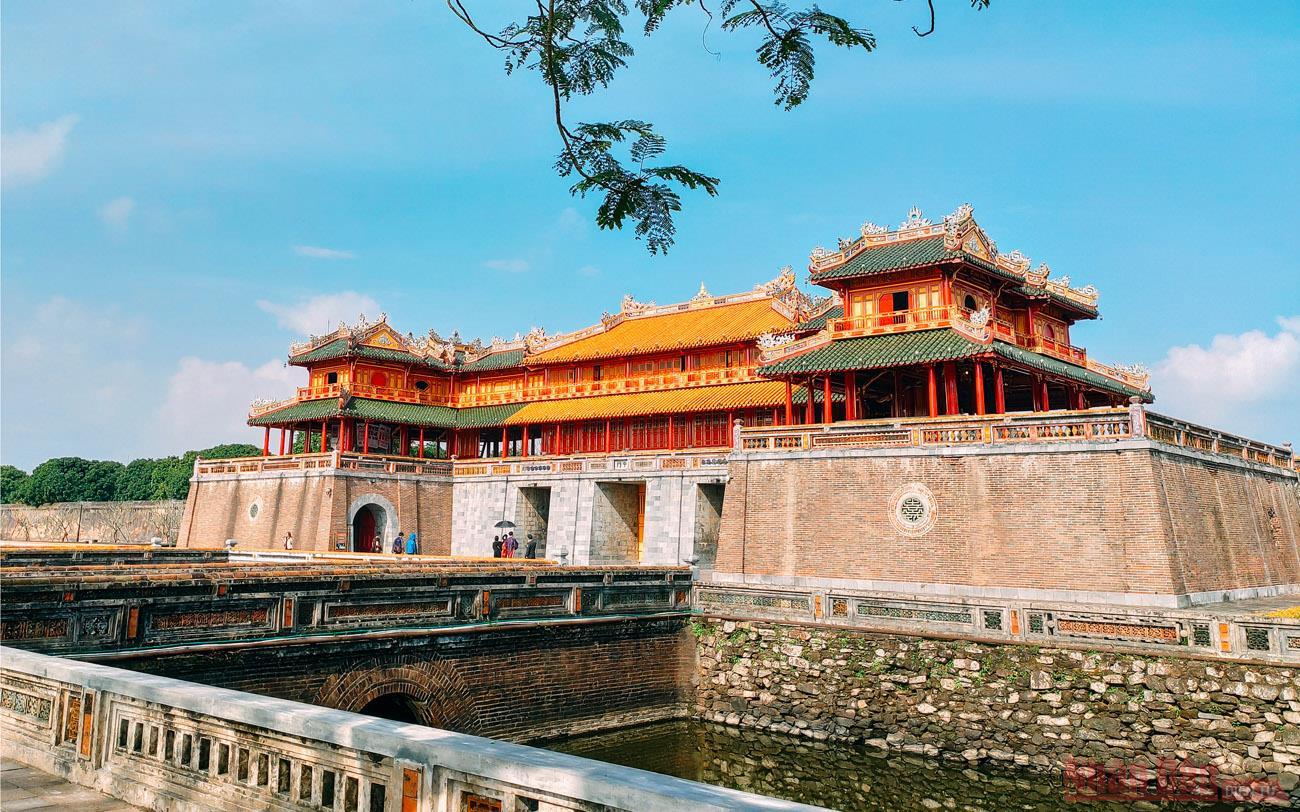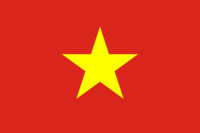Exploring the Magnificent Architectural Complex of Hue Imperial City during the Nguyen Dynasty
Hue Imperial City, one of the most significant structures of the Nguyen Dynasty, preserves memories of Vietnam’s powerful feudal era. Travelers visiting Hue must explore this site to admire the timeless beauty of ancient royal architecture.

- Where is Hue Imperial City Located?
Situated on the banks of the picturesque Perfume River, the Hue old City, also known as the Thuan Hoa Imperial City, is an ancient citadel within the Complex of Hue Monuments, recognized as a UNESCO World Cultural Heritage site. This historical site is centrally located in the city of Hue, boasting unique architectural features.
Covering an area of 520 hectares, Hue acient City served as the capital for 143 years from 1802 onwards, under the Nguyen Dynasty’s rule. Despite the ravages of time and war over two centuries, Hue Imperial City still retains its original charm.
When it comes to accommodation during your visit to this historical site, the Melia Vinpearl Hue offers all the amenities and excellent service, making it an ideal choice.
- History of Hue Imperial City Construction of Hue Imperial City
began in the summer of 1805 under the reign of Emperor Gia Long. Prior to that, planning for the citadel had commenced in 1803. The entire process of surveying the terrain was overseen by Emperor Gia Long himself and his royal ministers.
Compared to the former Phu Xuan capital, Hue Imperial City was significantly expanded. The construction phase in 1805 required the mobilization of approximately 30,000 citizens and soldiers to manage riverbanks and excavation. The ten city gates around the imperial city began construction in 1809.
By 1818, the number of people involved in construction had increased to 80,000, primarily focused on bricklaying on the east, west, south, and north sides. In 1831-1832, Emperor Minh Mang added outer walls surrounding the citadel, completing the architectural layout of Hue Imperial City.
- What Is the Architecture of Hue Imperial City Like?
3.1. Hue Imperial City’s Architecture Understanding Hue Imperial palace reveals a nearly square ground plan. Its front side has a slightly curved shape to follow the gentle flow of the Perfume River. The citadel’s perimeter extends over 10 kilometers and is constructed in a unique architectural style, combining the fortress design of Vauban from France (a military fortification technique featuring 24 bastions projecting outward) with Eastern architectural principles.
This clever adaptation to the actual terrain makes Hue old City a unique artistic military structure. Its architectural features set it apart from many previous imperial citadels.
3.2. How Many Gates Does Hue Imperial City Have?
Hue Imperial City has a total of 13 gates. Among them, ten gates provide access to the outside, one is an internal gate, and two are water gates.
- The Southeast Gate (Thượng Tứ Gate):
- The The Respected Thể Nhơn Gate (Ngăn Gate):
- The Quảng Đức Gate (Sập Gate):
- The South Gate (Nhà Đồ Gate):
- The Southwest Gate (Hữu Gate):
- The West Gate (Chánh Tây Gate):
- The Northwest Gate (Hậu Gate):
- The Northeast Gate (Kẻ Trài Gate):
- The North Gate (Chánh Bắc Gate):
- The East Gate (Đông Ba Gate):
- Trấn Bình Mon (Bình Mon Bastion):
- The Western Water Gate (Tây Thành Thủy Quan):
- The Eastern Water Gate (Đông Thành Thủy Quan):
4. What’s Inside Hue Imperial City?
4.1. Hue Imperial City Map Spanning over 500 hectares, Hue Imperial City can be overwhelming to explore. To avoid getting lost, it’s advisable to study and understand the layout by using a map or guide of Hue Imperial City. Here’s a map to help you navigate:
4.2. What’s Inside Hue City – Impressive Structures 4.2.1. The Ngo Mon Gate The Ngo Mon Gate is located to the south of Hue Imperial City and serves as its main entrance. It is part of a grand architectural ensemble, consisting of terraced levels constructed from immense stone slabs leading up to the Five Phoenix Pavilion. This gate is a must-visit for all travelers to Hue.
4.2.2. The Imperial City The Imperial City serves as the inner citadel of Hue Imperial City, designed as the residence of emperors, the royal family, and the administrative center of the Nguyen Dynasty. It is also the location for ancestor worship and the resting place of Nguyen emperors.
Construction of the Imperial City began in 1804 under Emperor Gia Long and was completed in 1833 during the reign of Emperor Minh Mang. The Imperial City features four gates, with the main gate being the Ngo Mon Gate. Inside the Imperial City, you can explore iconic structures like the Thai Hoa Palace, Dien Tho Palace, and Hien Lam Pavilion.
4.2.3. The Forbidden Purple City – Hue acient City The Forbidden Purple City is the innermost citadel of the Imperial City and was originally called the Imperial City. It received the name Forbidden Purple City (Tử Cấm Thành) in 1821, during the second reign of Emperor Minh Mang. It was the private residence of the Nguyen emperors and their immediate family. Unfortunately, a significant portion of the Forbidden Purple City was destroyed during the Vietnam War, but efforts have been made to restore and preserve what remains.
4.3. What’s Inside Hue citadel – Gardens and Landscapes Hue Imperial City is not only about its grand palaces and buildings; it also boasts beautiful gardens and landscapes. These include the Thuong Thanh (Upper Garden), Cuu Dinh Courtyard, Kien Trung Palace, and many more. The serene environment and harmonious combination of architecture and nature make these places perfect for peaceful contemplation and photography.
- Tips for Visiting Hue Imperial City When visiting Hue Imperial City, consider the following tips:
- Wear comfortable clothing and shoes suitable for walking, as you’ll be exploring a vast area.
- Check the opening hours and ticket prices before your visit.
- Be respectful of the historical site by not touching or defacing any structures.
- Stay hydrated and carry sunscreen and a hat, especially during hot seasons.
- Engage a knowledgeable guide or take an audio tour to fully appreciate the historical and cultural significance of the site.
Exploring Hue citadel is like stepping back in time to Vietnam’s feudal era. Its grandeur and historical importance make it a must-visit destination for travelers interested in the rich history and culture of Vietnam. Plan your visit to this remarkable site and immerse yourself in the beauty of Hue ancient City.

